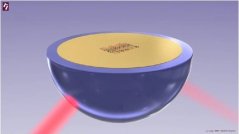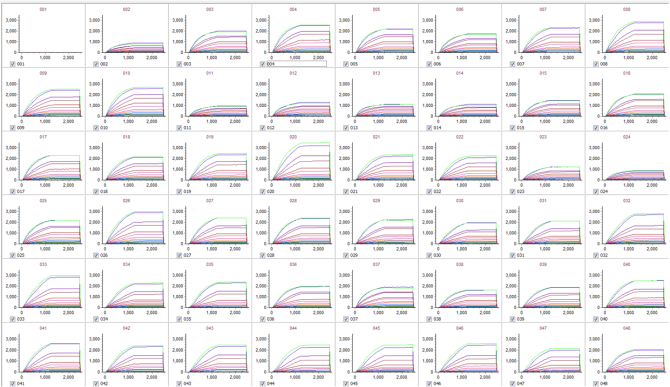Projekt
High-throughput, multiplex biosensor development for characterization of therapeutic proteins from mammalian cell cultures
Development of high-throughput, multiplex and label-free immunoassays based on the principle of imaging Surface Plasmon Resonance (iSPR) to measure e.g. product titer, glycan profiling and residual host cell proteins of therapeutic proteins produced in mammalian cell lines (CHO).
In the biopharmaceutical market increasing developments are on-going and this will continue in the near future. To bring a biopharmaceutical product to the market the bioreactor process and product purification processes need to be very well controlled. These are costly and time-consuming processes and identification of the most critical parameters in a process at lab scale can aid to develop a biotherapeutic faster and cheaper.
Imaging Surface Plasmon resonance (iSPR) is an analytical method which measures protein interactions and binding characteristics in real-time and simultaneously for large numbers of different interactions. Implementation of the imaging SPR technology during biopharmaceutical development can aid in different stages during the USP and DSP processes, from clone selection and fermentation optimization to purification optimization.
Aim

The aim of this project is to develop different high-throughput screening assays for characterization of IgG therapeutic proteins from CHO cell cultures, using the imaging SPR technology. Screening of product titer, glycoprofiling and CHO host cell proteins will be the main areas for which assays will be developed. Subsequently these different assays can be combined to one multi-functional microchip for simultaneous characterization of the different characteristics.
The final methods can be used to aid in another PhD project (Xiao Pan) which is aimed at optimizing micro-bioreactor systems and fed-batch systems for CHO cell cultures and is run in parallel with this project.
Approach
The analytical immunoassays that are developed are based on biological interactions of the therapeutic proteins (IgG’s), the N-glycans present on the IgG’s or of the host cell proteins with other proteins or biological compounds. With the imaging SPR technology microchips can be spotted with different types of immobilized proteins or other active functional groups. Injection of therapeutic proteins over the surface will result in different binding kinetics and binding specificity to characterize the product.

Acknowledgements
This project is subsidised by Synthon BV and is part of a larger project subsidised by EFRO and the other project partners IBIS Technologies BV, Bioceros BV and Infors BV.